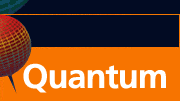CONTACTS
- Coordinator
Diego Dalvit
-
Quantum Lunch Location:
T-Division Conference Room, TA-3,
Building 123, Room 121
 |


Quantum Institute: Visitor Schedule
The Quantum Lunch is regularly held on Thursdays in the Theoretical Division Conference Room, TA-3, Building 123, Room 121.
For more information, contact Diego Dalvit.
Thursday, October 2, 2008
12:30 PM to 2 PM
Speaker: A. M. Rey, JILA and University of Colorado, Department of Physics, University of Colorado
Technical Host: Eddy Timmermans
TOPIC: Exploring quantum magnetism in optical super-lattices
Abstract
A fundamental problem in quantum physics is to determine whether spin-independent interactions
can be the origin of the ferromagnetic or antiferromagnetic ordering observed in some materials.
The Hubbard model is one of the minimal models that describes strongly correlated fermions in a
lattice and was developed to study quantum magnetism in these systems. The Hubbard model is
nevertheless a very complicated model and its phase diagram remains unknown except at half-lling
and when there is a single hole. Spinor atoms in optical lattices are highly controllable systems ideal
to investigate quantum magnetism in strongly correlated systems. They have the potential to help
us understand the Hubbard model phase diagram. However, to achieve this goal we have to start
by exploring the known regions rst. This is going to be the topic of this talk. In the rst part I
am going to describe a novel approach to prepare, detect and control super-exchange interactions
in ultracold spinor atoms loaded in double well superlattices [1]. Recently this approach was used
for the rst experimental observation of super-exchange interactions in ultra-cold atoms [2]. In the
second part I am going to discuss how to prepare and detect the ferromagnetic order that arises in
the present of a single hole using an array of plaquettes (four lattice sites coupled in a square). The
latter is also known as Nagaoka ferromagnetism.
[1] A. M. Rey, V. Gritsev,I. Bloch, E. Demler, and M. D. Lukin, PRL 99, 140601 (2007).
[2] S. Trotzky, P. Cheinet, S. Folling, M. Feld, U. Schnorrberger, A.M. Rey, A. Polkovnikov, E.
Demler, M. D. Lukin, and I. Bloch, Science 319, 295 (2008).
|


